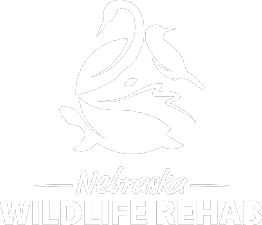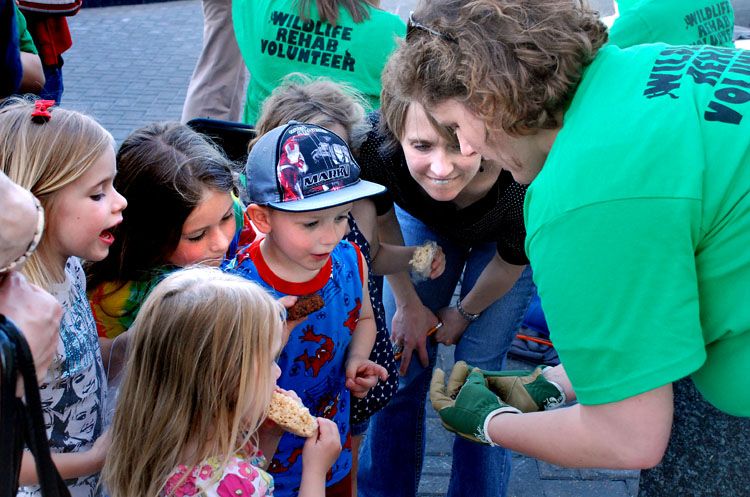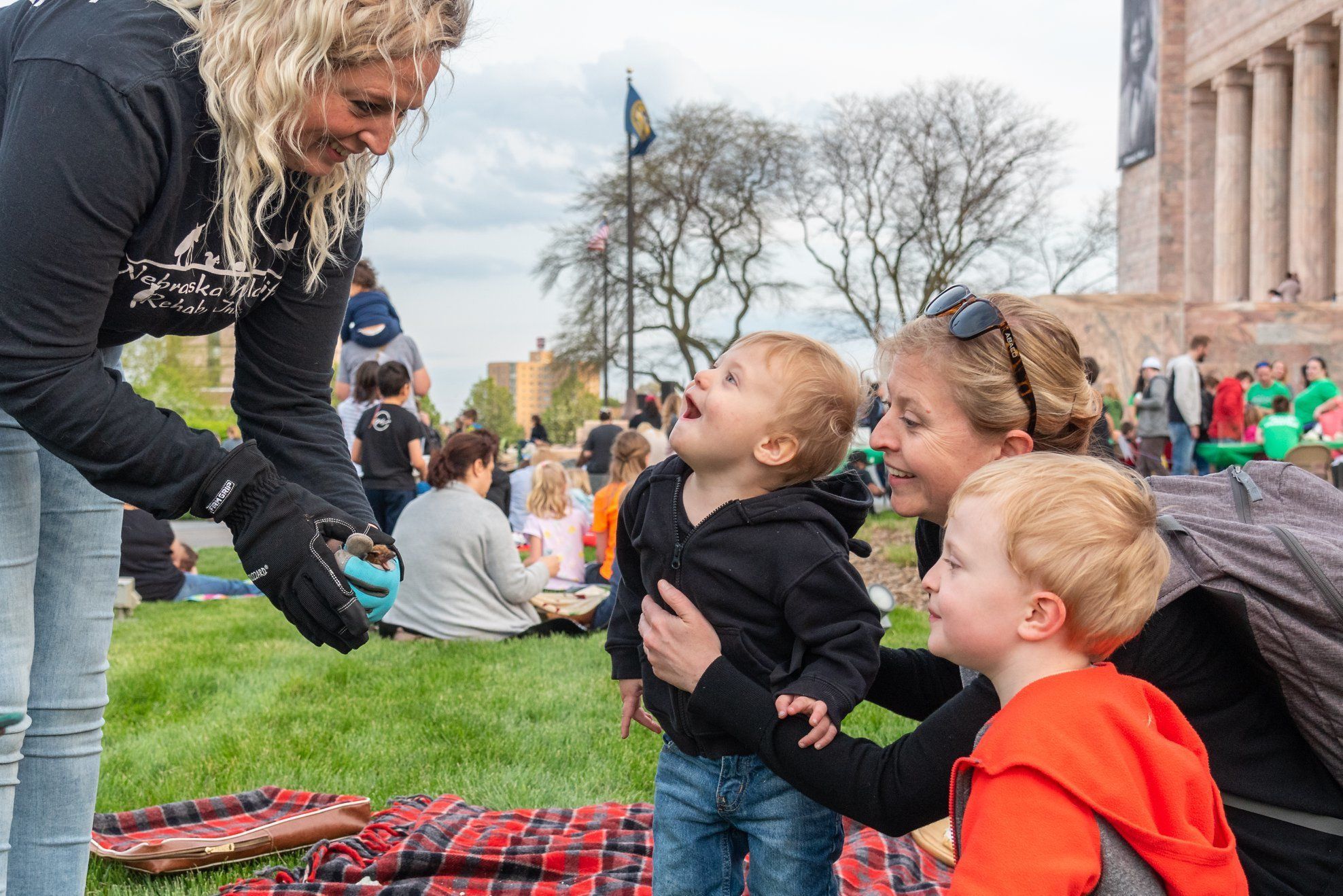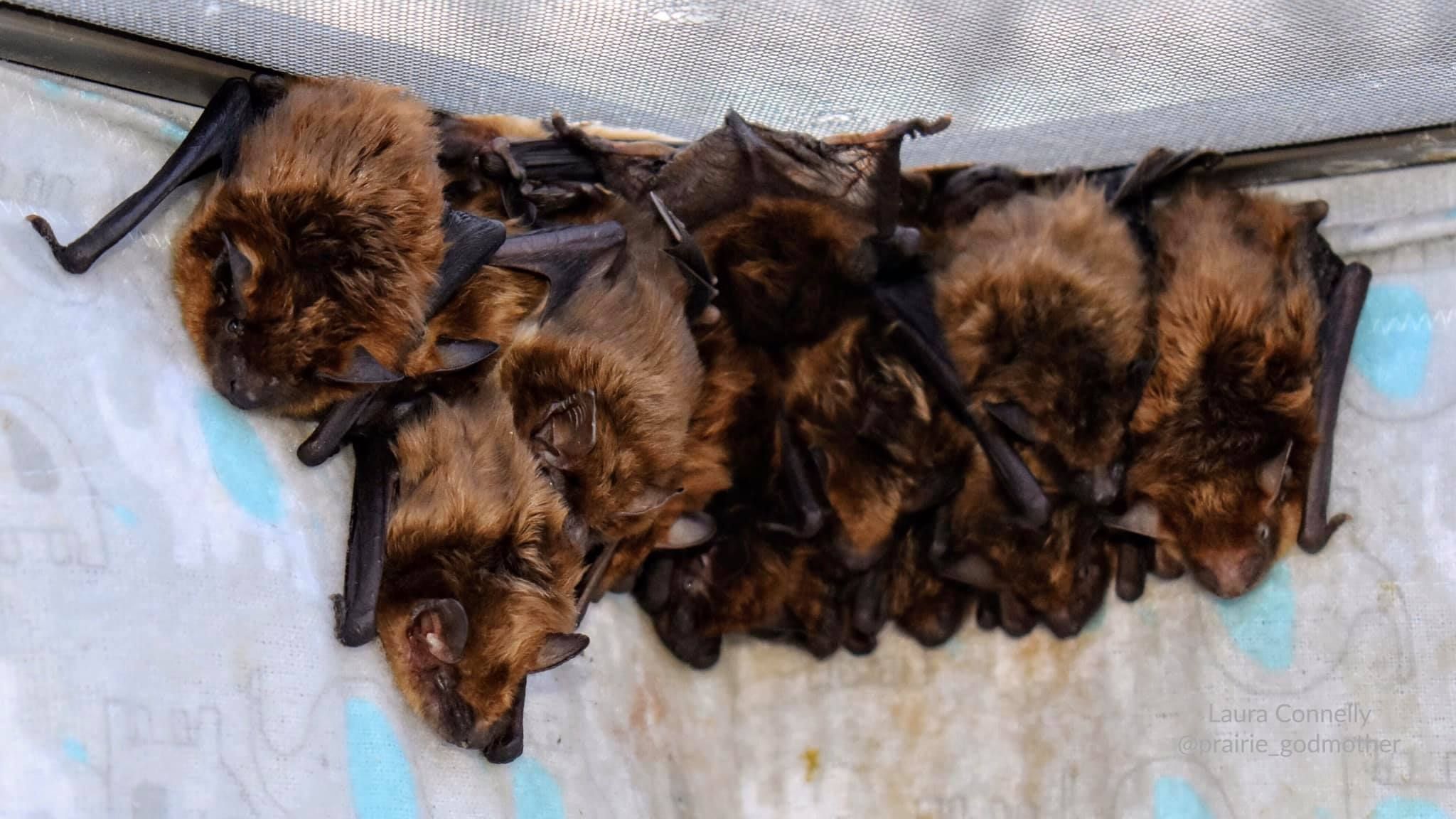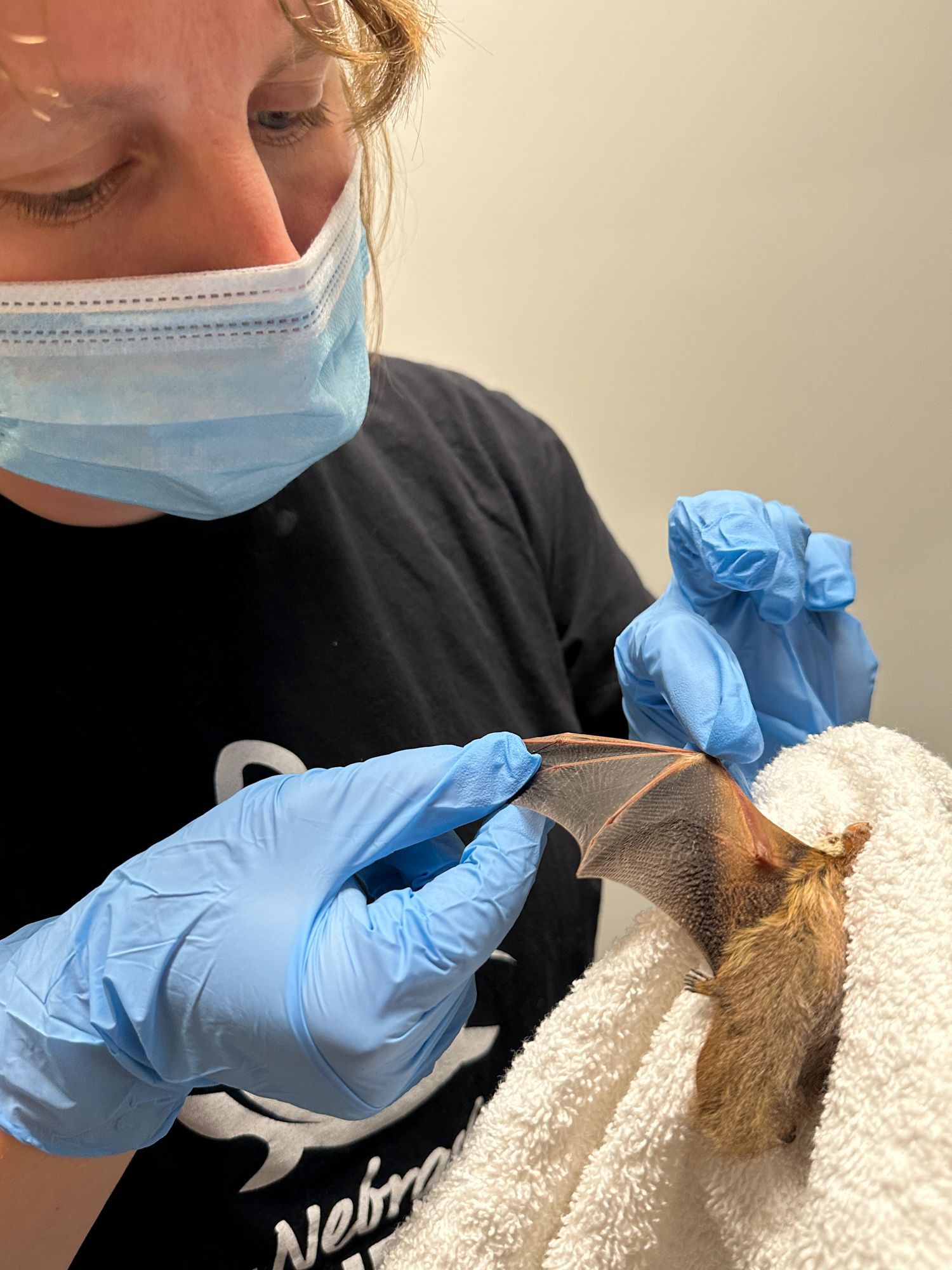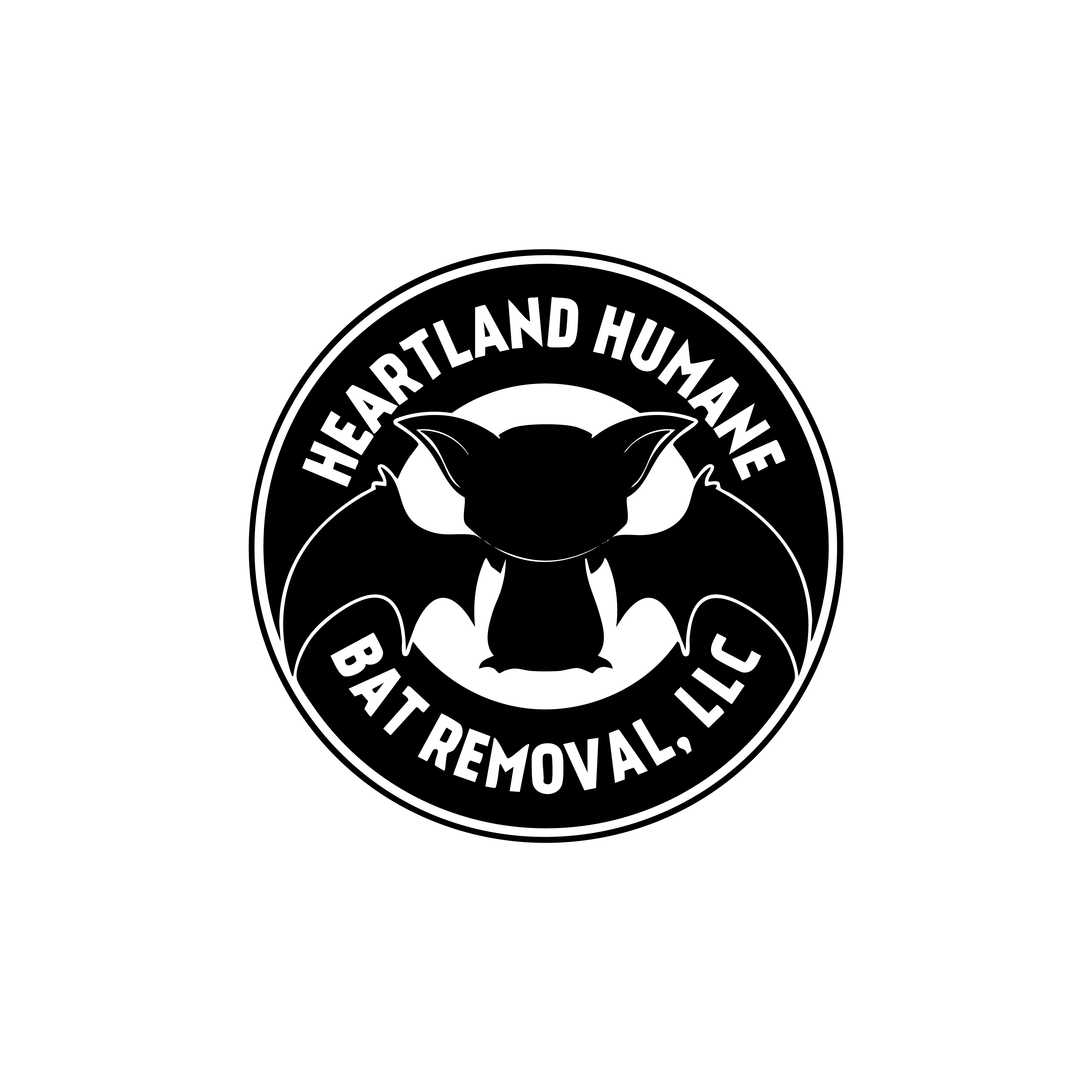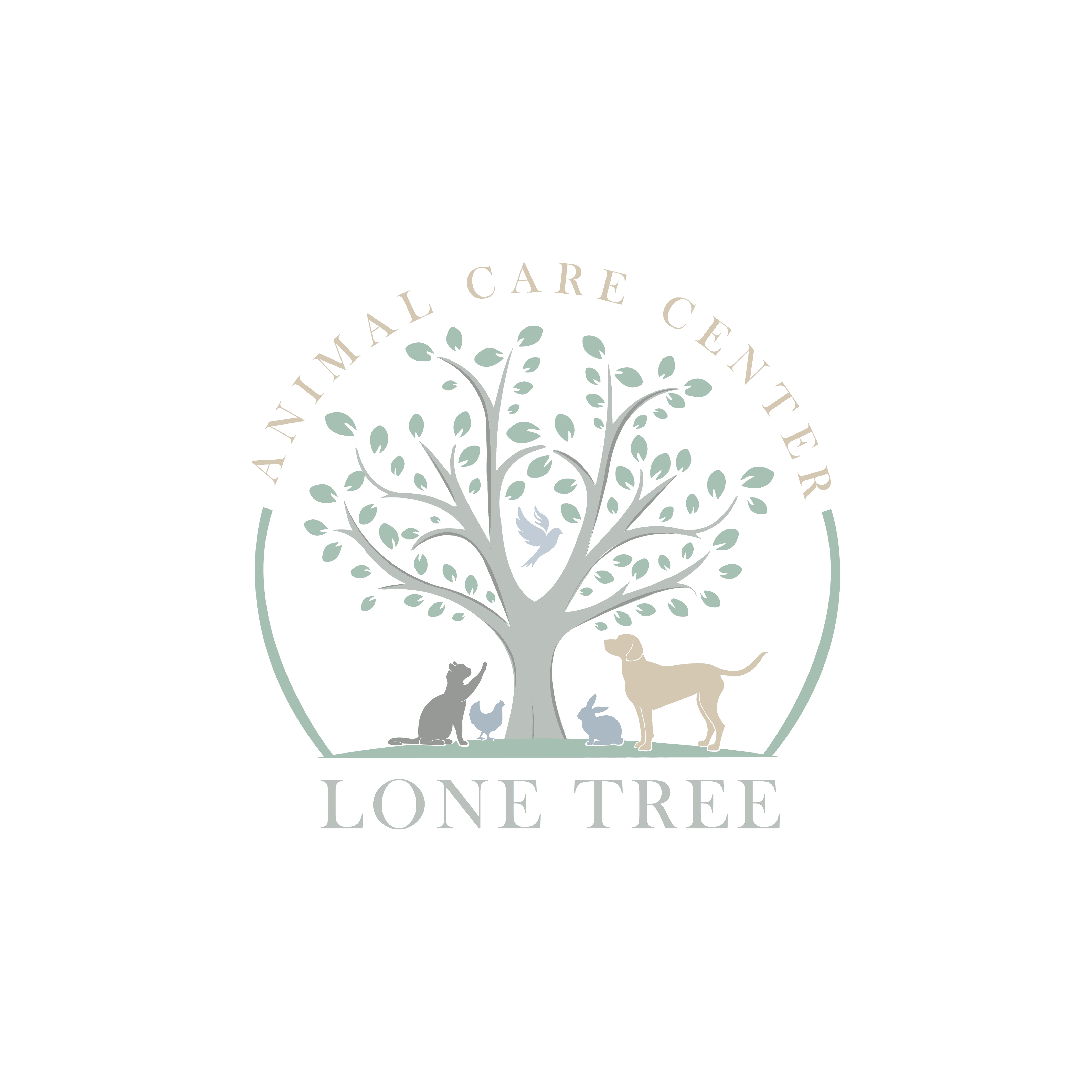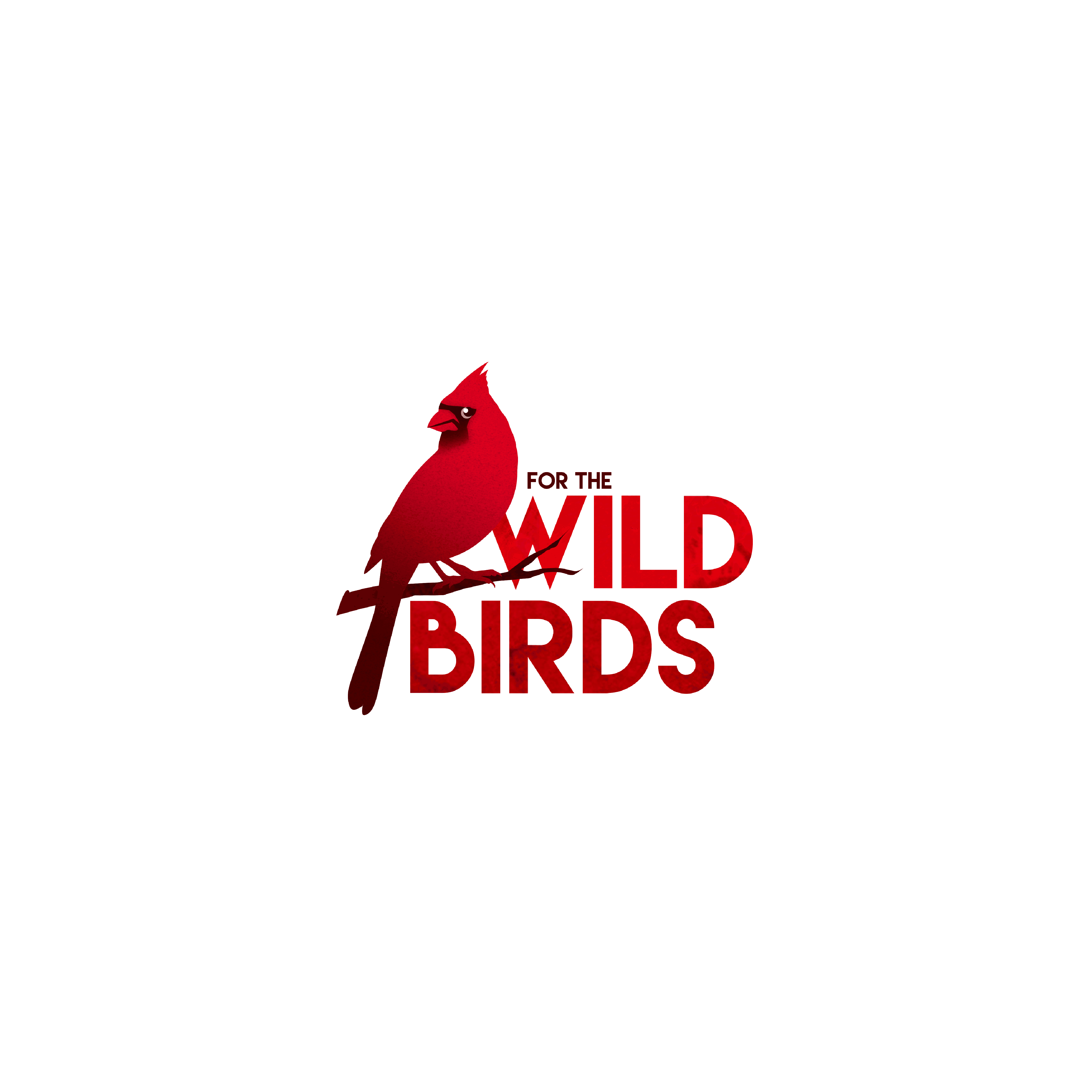One of our most beloved patients at Nebraska Wildlife Rehab are native bat species that come into our care over the course of the winter, and each spring we look forward to seeing them spread their wings in the wild again.
For the past 15 years, we have welcomed the public to join us and enjoy the spectacle of their flight at this highly anticipated family-friendly event that includes children’s activities, food trucks, educational tables, & the stars of the show - our native Nebraska bats!
In 2025, we’re thrilled to announce a new partnership with the Omaha RiverFront, hosting our event on May 5th from 6pm-9pm at Heartland of America Park on the lawn alongside the skate ribbon. Ample green space, public amenities & proximity to home roosts for many of our bats make this an incredible venue, and we're so excited to welcome back our supporters to celebrate!
Every donation advances our mission to rehabilitate injured or displaced bat species and preserve biodiversity through science and stewardship.
Where Do The Bats Go When They're Released?
Most of our bats come from eastern Omaha and there is good evidence to support that the bats "go home" when released. This means that when we release the bats there, we're giving most of the bats the shortest trip home. If you live in the neighborhood, don't worry — the bats aren't going to make a new roost in your house if you don't have bats there already. They are going to go back to their home roost as soon as they can.
Why Do We Do It?
We receive hundreds of bats during the winter months when they should be hibernating. Most come from inside buildings where they have set-up winter roosts. All of the bats in Nebraska eat insects. When they are found in buildings in the winter, they must come into rehab, regardless of whether they are injured or not. This is because it is too cold outside for them and there is nothing for them to eat in the winter.
Our rehabilitators treat any injuries and feed the bats until they are of an appropriate hibernating weight. They are then placed in artificial “hibernacula” where the temperature and humidity are closely monitored so they can sleep the rest of the winter away.
In the spring, once there are abundant insects and the free bats are flying, we start looking for a good stretch of weather to let our bats free again. We watch for appropriate temperatures, wind speed, and the threat of rain to decide when we are going to release our bats. Once we set a date, we notify the public that bat release is on!
Bats are extremely critical to our natural enviroment and each individual is important to bat populations in Nebraska. We thank you for caring about bats as much as we do!
